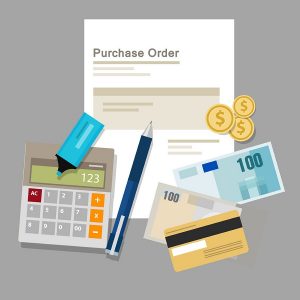 The 9th area of knowledge of the PMBOK Guide (Project Management Body of Knowledge) is focused on the Management of project acquisitions, or in other words, the relationship of an organization with its suppliers.
The 9th area of knowledge of the PMBOK Guide (Project Management Body of Knowledge) is focused on the Management of project acquisitions, or in other words, the relationship of an organization with its suppliers.
Good relations with suppliers are essential to gain competitive advantage, considering that good procurement will allow us to improve margins and provide alternative strategies to position the organization in the market.
Manage your suppliers and all the purchases of your project with ITM Platform
The Project Management Director should participate in the procurement process of the plan, which implies an active collaboration with the procurement department for the planning and management of purchases. As we cannot directly manage the activities of suppliers, it is very important to control the terms of the purchases so that the project execution is not delayed.
This area is one of the most sensitive from the ethical point of view, since there may collusion by suppliers or undeclared conflicts of interest between the project director and the service provider.
Phases of Project Procurement Management
1. Specification
The actors involved in this phase are the procurement department and the project manager. This phase consists of developing and approving a list of the products or resources to be acquired for the project execution.
2. Selection
After the specification phase, the procurement department will have to find the best suppliers, according to the specifications agreed with the project manager.
At this point, it is important to establish the key criteria for the selection of suppliers, like delivery terms, quality of service, cost or offered performance.
3. Contracting
Once potential providers are selected, the procurement department will negotiate delivery terms and payment conditions with the collaborating companies. It is very important that the acquired resources or items be delivered in a timely manner to avoid delays that may affect the execution of the plan.
All the agreed conditions must be included in the budget and in the purchase contract.
4. Control and supervision
The supervision of the purchasing process will ensure a smooth development of the project but we must also have in place the necessary measures to guarantee that any purchase made adjusts to the agreed quality.
Regular meeting and fluid communication between the procurement department and the supplier are important to avoid setbacks and confusion, or to make possible changes that are considered appropriate and necessary.
5. Measure the results
The final step of the procurement process refers, precisely, to the use of a system of performance indicators that allow us to evaluate the effectiveness and success of the entire process.
The evaluation should aim to discard those suppliers that have not complied with the agreed conditions, while positively evaluating those that are a guarantee of success. The formalization of the impressions of the purchasing team and other interested parties is an important element of this phase.
The reports will be fundamental for the execution of future projects because it will enable us to learn from errors, obstacles or difficulties that we have encountered in the way.
The project manager will be responsible for establishing a system to measure results while the procurement department will be the responsible for taking the measurement. Special meetings and workshops will be a great help to analyze KPIs, buyers’ performance, adherence to product specifications and communication with suppliers. In the event of a deviation, the procurement team will have to communicate it to the project manager so that he may apply the necessary changes to the acquisition plan.
Project Acquisition Plan
The Project Acquisition Plan guides the entire procurement process. It is a tool that will help organize and manage the activities or tasks related to the process. The purchasing team will prepare the plan and the director will approve it before carrying out any operation with the suppliers.
In the Procurement Plan, we will include documents on the whole process, such as Agreement templates or contracts, estimated deadlines and the inspection of purchases, ways of contracting, financing model, quality standards, and risk management.
